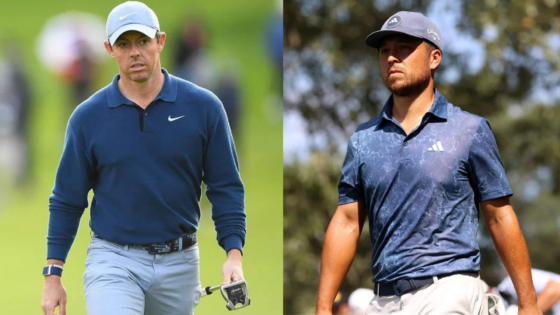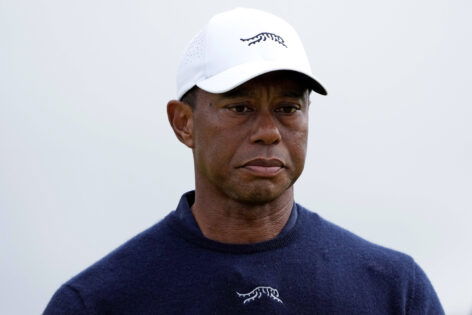Is the NBA quietly breaking down while trying to hold it all together? If you’re Steve Kerr, you probably didn’t need a 57-page league report to tell you what your gut and injured roster already knew. Something’s not adding up. The schedule isn’t getting longer. The travel is more comfortable. Sports science is more innovative. But the injuries? They’re up. Way up. And when Kerr says he’s emailed Adam Silver, you know it’s not about All-Star Weekend accommodations.
Vincent Goodwill, a senior reporter with Yahoo Sports, hasn’t held back words on this topic recently. He laid out the harsh truth on the real culprit behind this injury epidemic: the myth of early specialization. Players enter the league with miles on their bodies before they’ve even hit 22. “It’s not on the NBA to regulate what they do because players are coming in with pre-existing conditions,” Goodwill argued.
“Have your kids play soccer, have them play football, have them do something else besides working that one muscle every year from the point that they’re eight or nine years old.” What did he mean by saying that? This isn’t just a league problem and a basketball culture crisis. The most ironic part, though?
Kerr, the guy who once played four straight 82-game seasons for the Bulls without missing a beat, and won three of them, is now pleading with the league to slash the schedule. He told reporters he wants to cut it down to 65 games. Why? Because this is not 1996. “I’m concerned about the product because I think we are asking way too much of our players,” he wrote in an email to Adam Silver back in November.
He continued, “I’m concerned about the product because I think we are asking way too much of our players. The game has never been more difficult to play at a high level night after night after night. We should account for that. We all need to be thinking about that, for sure.” The math backs him up: NBA players are now running farther, covering more ground, and shooting deeper than ever. In his Chicago Bulls days, Kerr didn’t have to guard guys pulling up from 30 feet. Now? That’s the minimum requirement. What makes this shift so disturbing is Kerr’s history.
Apr 4, 2025; San Francisco, California, USA; Golden State Warriors head coach Steve Kerr signals to the team during the game against the Denver Nuggets in the second period at Chase Center. Mandatory Credit: David Gonzales-Imagn Images
The man played 385 games over four years (per season average: approximately 96 games) without skipping a beat. He outpaced the game’s current injury curve. And yet, he’s the one telling the NBA to slow down because the game has developed, yes. But also because the players haven’t developed at the same pace. Bodies break down. Workloads balloon. And fans? They pay to see the stars, which increasingly just aren’t available. Take Tyrese Haliburton in the 2025 NBA Finals, for example. But that’s not all.
This is where the league’s 2024 Player Participation Policy attempts to balance competitive integrity, TV ratings, and player health. But the season tells a different story. As of April 10, NBA players had already missed a staggering 6,525 games because of injuries, a jump of nearly 1,000 from the same point last season. So while the league fine-tuned its rules, dangled postseason incentives, and begged stars to suit up, reality didn’t flinch.
The human body isn’t built for 82 games of coast-to-coast sprints, nightly collisions, and guarding 6’9” flamethrowers off pindowns. You can’t legislate health. You can’t shame a hamstring into cooperating. And in this era of maxed-out speed and spacing? Even a single missed game often feels like a career preservation strategy… not a red flag. So, if load management doesn’t work, and the schedule stays long, what’s left to tweak? Enter: LeBron James.
Kerr and Bron urge a shorter NBA season
The King of the Los Angeles Lakers has played more basketball minutes than anyone, 59,042. So when he talks about changes, people listen. On the “Mind the Game” podcast, LeBron proposed trimming games from 48 minutes to 40 and even tossed in FIBA-style goaltending rules. Why? “The 40-minute game is intriguing… it gives it a little bit more of a sense of urgency,” he said. And he’s not wrong. Watch an Olympic game—it’s chaos, fire, and intense. Contrast that with the NBA’s sometimes draggy stretches, and you start to see LeBron’s point.
Dec 30, 2024; San Francisco, California, USA; Golden State Warriors guard Stephen Curry (30) watches as head coach Steve Kerr reacts during the first quarter of the game against the Cleveland Cavaliers against the Cleveland Cavaliers at Chase Center. Mandatory Credit: John Hefti-Imagn Images
Because this isn’t a soft plea from older stars looking to cruise into retirement, it’s a legitimate signal from those who’ve carried the league’s weight (and ticket sales) for decades. Kerr, LeBron, Goodwill, and even Mark Cuban are all saying the same thing differently: the game is brilliant but broken. The product is high-quality but unsustainable. But of course, reducing the number of games would mean reducing revenue.
And that’s where idealism hits a brick wall. Steve Kerr has lobbied for fewer games like a man asking to skip dinner and split dessert. But as he admits, “It’s a money issue.” A big one. The NBA inked a $76 billion media deal in July. The cap’s jumping 10% next season. In a few years, your favorite third-option forward might be making $100 million and hosting a cooking show on the side. Fewer games? Not when everyone’s eating this well. And this brings us back to Kerr.
He’s still coaching the Golden State Warriors, pushing the pace, and fighting for his guys. But he’s also staring down a system that’s eating its stars alive. “We are asking way too much of our players,” he said. And for a guy who watched Michael Jordan play all 82 more than once, that’s not nostalgia talking. That’s experience seeing the crash before the skid. Whether the league listens remains to be seen. But the message?
Oh, it’s crystal clear. If nothing changes, the NBA’s next golden era might be led by backup units. Stay tuned. As more voices join Kerr and LeBron, the question isn’t whether the NBA will evolve. How soon?
The post Steve Kerr and LeBron James Get Harsh Reality Check as Troubling Health Concerns Emerge appeared first on EssentiallySports.



